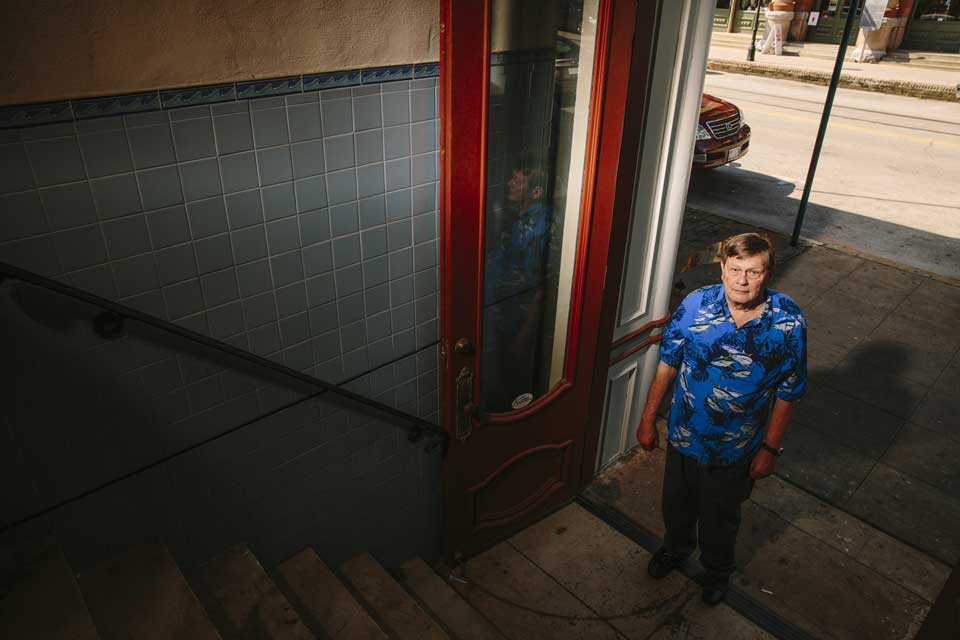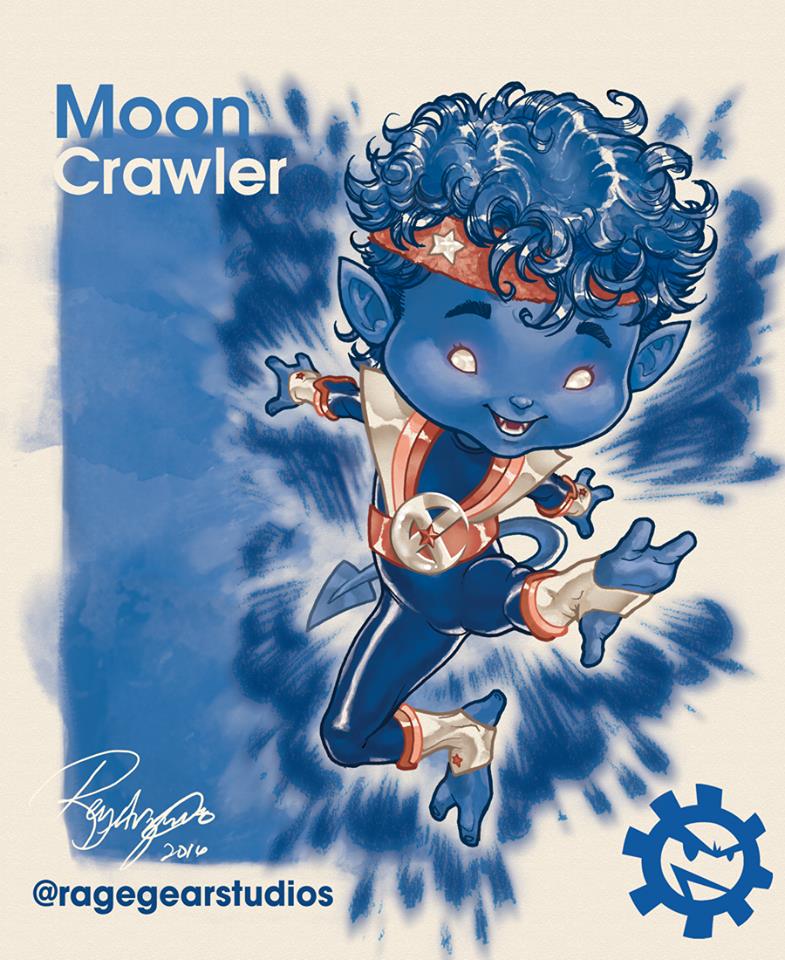 Return to Map
Return to Map
It is not if, but when Houston’s perfect storm will hit…
They called Ike “the monster hurricane.”
Hundreds of miles wide. Winds at more than 100 mph. And — deadliest of all — the power to push a massive wall of water into the upper Texas coast, killing thousands and shutting down a major international port and industrial hub.
That was what scientists, public officials, economists and weather forecasters thought they were dealing with on Sept. 11, 2008, as Hurricane Ike barreled toward Houston, the fourth-largest city in the United States and home to its largest refining and petrochemical complex. And so at 8:19 p.m., the National Weather Service issued an unusually dire warning.
“ALL NEIGHBORHOODS, AND POSSIBLY ENTIRE COASTAL COMMUNITIES, WILL BE INUNDATED,” the alert read. “PERSONS NOT HEEDING EVACUATION ORDERS IN SINGLE FAMILY ONE OR TWO STORY HOMES WILL FACE CERTAIN DEATH.”
But in the wee hours of Sept. 13, just 50 miles offshore, Ike shifted course. The wall of water the storm was projected to push into the Houston area was far smaller than predicted — though still large enough to cause $30 billion in damage and kill at least 74 people in Texas. Ike remains the nation’s third-costliest hurricane after Katrina and Superstorm Sandy.
Still, scientists say, Houston’s perfect storm is coming — and it’s not a matter of if but when. The city has dodged it for decades, but the likelihood it will happen in any given year is nothing to scoff at; it’s much higher than your chance of dying in a car crash or in a firearm assault, and 2,400 times as high as your chance of being struck by lightning.
If a storm hits the region in the right spot, “it’s going to kill America’s economy,” said Pete Olson, a Republican congressman from Sugar Land, a Houston suburb.
Such a storm would devastate the Houston Ship Channel, shuttering one of the world’s busiest shipping lanes. Flanked by 10 major refineries — including the nation’s largest — and dozens of chemical manufacturing plants, the Ship Channel is a crucial transportation route for crude oil and other key products, such as plastics and pesticides. A shutdown could lead to a spike in gasoline prices and many consumer goods — everything from car tires to cell phone parts to prescription pills.
Explore the Ship Channel »
“It would affect supply chains across the U.S., it would probably affect factories and plants in every major metropolitan area in the U.S.,” said Patrick Jankowski, vice president for research at the Greater Houston Partnership, Houston’s chamber of commerce.
Houston’s perfect storm would virtually wipe out the Clear Lake area, home to some of the fastest-growing communities in the United States and to the Johnson Space Center, the headquarters for NASA’s human spaceflight operation. Hundreds of thousands of homes and businesses there would be severely flooded.
Many hoped Ike’s near miss would spur action to protect the region. Scientists created elaborate computer models depicting what Ike could have been, as well as the damage that could be wrought by a variety of other potent hurricanes, showing — down to the specific neighborhood and industrial plant — how bad things could get.
Play Hurricane Ike
They wanted the public to become better educated about the enormous danger they were facing; a discussion could be had about smarter, more sustainable growth in a region with a skyrocketing population. After decades of inaction, they hoped that a plan to build a storm surge protection system could finally move forward.
Several proposals have been discussed. One, dubbed the “Ike Dike,” calls for massive floodgates at the entrance to Galveston Bay to block storm surge from entering the region. That has since evolved into a more expansive concept called the “coastal spine.” Another proposal, called the “mid-bay” gate, would place a floodgate closer to Houston’s industrial complex.
But none have gotten much past the talking stage.
Hopes for swift, decisive action have foundered as scientists, local officials and politicians have argued and pointed fingers at one another. Only in the past two years have studies launched to determine how best to proceed.
A devastating storm could hit the region long before any action is taken.
“That keeps me up at night,” said George P. Bush, the grandson and nephew of two U.S. presidents and Texas’ land commissioner. As head of an agency charged with protecting the state’s coast, he kickstarted one of the studies that will determine the risk the area faces and how to protect it.
But the process will take years. Bush said, “You and me may not even see the completion of this project in our lifetime.”
It’s already been eight years since Ike and Houston gets hit by a major storm every 15 years on average.
“We’re sitting ducks. We’ve done nothing.” said Phil Bedient, an engineering professor at Rice University and co-director of the Storm Surge Prediction, Education, and Evacuation from Disasters (SSPEED) Center. “We’ve done nothing to shore up the coastline, to add resiliency ... to do anything.”


Shell's Deer Park facility is just one of the many industrial facilities that sit on or near the Houston Ship Channel, one of the world’s busiest shipping lanes. (Edmund D. Fountain/ProPublica/Texas Tribune)
To this day, some public officials seem content to play the odds and hope for the best. Houston’s new mayor, former longtime state lawmaker Sylvester Turner, declined an interview request for this story. Turner’s office released a statement from Dennis Storemski, the city’s public safety and homeland security director.
“Only a small portion of the city of Houston is at risk for major storm surge,” it said. In a second statement, Storemski placed the onus primarily on the federal government to safeguard the Houston region from a monster hurricane. He said the city “looks forward to working with the responsible federal agencies when a solution is identified and funded.”
“Until then, we continue to inform our residents of their risk and the steps they should take when a significant tropical cyclone causes storm surge in the [Ship] Channel, and evacuations become necessary,” the statement said.
The pressure to act has only grown since Ike, as the risks in and around Houston have increased.
The petrochemical complex has expanded by tens of billions of dollars. About a million more people have moved into the region, meaning there are more residents to protect and evacuate.
“People are rushing to the coast, and the seas are rising to meet them,” said Bill Merrell, a marine scientist at Texas A&M University at Galveston.
”We’re all at risk”
The Houston Ship Channel and the energy-related businesses that line it are widely described as irreplaceable. The 52-mile waterway connects Houston’s massive refining and petrochemical complex to the Gulf of Mexico.
For all its economic importance, though, the Ship Channel also is the perfect conduit to transport massive storm surge into an industrial area that also is densely populated.
“We’re all at risk, and we’re seriously at risk,” said Craig Beskid, executive director of the East Harris County Manufacturers Association, which represents ExxonMobil, Chevron, Shell and other major companies that operate 130 facilities in the area. “Not only are the people here in this region at risk, but significant statewide economic assets and national assets are also at risk.”


The Ship Channel is used to transport crude oil and other key products like plastics and pesticides. If a storm hits the Houston region in the right spot, “it’s going to kill America’s economy,” one Houston-area congressman said. (Edmund D. Fountain/ProPublica/Texas Tribune)
Half of the Ship Channel, which is 45 feet at its deepest, cuts through Galveston Bay, while the other half is landlocked, snaking inland at about 400 feet wide. Its slim and shallow nature would intensify the height and impact of potential storm surge.
The effect would be similar with Clear Lake, another narrow channel jutting off the bay that is surrounded by affluent suburban communities.
Explore Clear Lake »
The storm models that scientists have created show that Houston’s perfect storm would push water up the Ship Channel, topping out at a height of more than 30 feet above sea level. The surge would be only slightly lower in Clear Lake.
That’s higher than the highest storm surge ever recorded on the U.S. coast — 27.8 feet during Hurricane Katrina. And it would be almost entirely unabated. Unlike New Orleans, whose levee system failed during that 2005 storm and was rebuilt after, Houston has no major levee system to begin with. (A 15-foot earthen levee and flood wall surrounds one low-lying town on the Ship Channel, but that would be inadequate to protect against a worst-case storm.)
“You’re talking about major, major damage,” said state Sen. Sylvia Garcia, a Houston Democrat. “And it seems like every year they tell us that we’re overdue for one.”
Each monster hurricane model that scientists provided to The Texas Tribune and ProPublica is slightly different. One model, nicknamed “Mighty Ike” and developed by the SSPEED Center and the University of Texas at Austin, is based on Ike but increases its wind speeds to 125 mph. Researchers also refer to that as “p7+15.”
Play Storm "P7+15," a.k.a. "Mighty Ike"
Another storm, modeled by the Federal Emergency Management Agency and the U.S. Army Corps of Engineers, is physically smaller but has much higher wind speeds — 145 mph. Still, neither the FEMA model nor Mighty Ike is classified as a Category 5 storm, which would have wind speeds of at least 157 mph.
Play the FEMA 500-year Storm: Storm 36
Both would make landfall at a point near the western end of Galveston Island, where Ike was originally projected to come ashore.
For Houston, that’s the worst place a hurricane could hit, positioning the counterclockwise-spinning storm to fling the most water into the Ship Channel and Clear Lake.
Explore Galveston »
The scenarios are rare, scientists say, but by no means impossible. Mighty Ike is considered a 350-year event, according to the SSPEED Center, and the FEMA model is what is referred to as a 500-year storm.
Such events have a small, but measurable, chance of occurring in any given year. For example, there is a 1-in-500, or 0.2 percent, chance that a storm portrayed by the FEMA model will occur in the next hurricane season. Over the next 50 years, that translates to a likelihood of about 10 percent.
Scientists widely believe the method of calculating the probability of such storms may no longer be valid, in part because of climate change. “100-year” events might occur as often as every few years, while “500-year” events could every few decades, climate scientists say.
As scary as the models are, they are based on current sea levels. That means such storms will be even more damaging in the future as sea levels continue to rise in the wake of climate change.
Each model projects nothing short of catastrophe. Total damage could easily top $100 billion, scientists say. That is about how much damage Katrina inflicted on Louisiana, Florida and Mississippi a decade ago.
Galveston Island and low-lying communities in the Houston metro area would be completely underwater hours before the hurricane even hit.
Once the storm makes landfall, hurricane-force winds would meet rising waters to blow 25- to 35-foot storm surges up Clear Lake and the Houston Ship Channel.
The rushing water would be strong enough to knock homes and even sturdier commercial buildings off their foundations.
The models incorporate base land elevation and even some small levees or barrier systems, though not whether structures are elevated on slabs or stilts.
They show that many industrial areas along the Ship Channel would be inundated with enough water to cover a two- or even three-story building.
For more on how the models work, read our complete methodology.
The communities and industrial plants around the Ship Channel and Clear Lake are typically elevated to only 10 to 20 feet above sea level, said Bedient of Rice University.
That means for many who haven’t evacuated, “you’re seeing people scrambling for their lives off of that first floor into the second floor,” Bedient said. “And then when it’s 20 feet high, you’re going to see water in the second floor as well.”
Sam Brody, a marine scientist at Texas A&M who has studied the vulnerability of Clear Lake, says many people living there have no idea of the risk.
“It’s a great place to be,” he said of the region. “The last thing you think about is 20 feet of water coming up here.”
An economic and national security issue
Beyond the pain a scenario like Mighty Ike would inflict locally, a storm that cripples the region could also deeply damage the U.S. economy and even national security.
The 10 refineries that line the Ship Channel produce about 27 percent of the nation’s gasoline and about 60 percent of its aviation fuel, according to local elected and economic development officials. The production percentage is by most accounts even higher for U.S. Department of Defense jet fuel. (Official production figures are proprietary.)
In 2008, Ike caused widespread power outages that shuttered refineries for several weeks and forced operators to close a vast network of pipelines that delivers gasoline made in Houston to almost every major market east of the Rocky Mountains. Days after the storm hit, Houston Congressman Gene Green said concern over jet fuel was significant enough that a Continental Airlines executive and an Air Force general showed up to a local emergency response meeting to assess the situation.
“We can’t stand it when they shut down,” Green, a Democrat, recalls the general telling him. “We need to see what we can do to help.”
The airline executive, meanwhile, told him that commercial planes that usually gassed up in Houston were flying out with partially empty tanks.
If Houston’s refineries closed, some experts envision something like $7 per gallon gasoline across the country for an indefinite period of time — particularly in the southeast, which is “highly dependent” on two pipelines fed by Gulf refineries, according to the U.S. Department of Energy.
“We would definitely see the price of gasoline, aviation and diesel fuel skyrocket,” not only domestically but probably globally, said Jankowski, of the Greater Houston Partnership.
Other analysts are less concerned, saying that refineries elsewhere would meet demand.
“Price spikes influenced by major storms/hurricanes tend to be shorter lived than most think,” said Denton Cinquegrana, chief oil analyst for the Oil Price Information Service, in an email.
Still, the Houston region’s 150 or so chemical plants are even more central to U.S. and global manufacturing than its refineries are to fuel production. They make up about 40 percent of the nation’s capacity to produce basic chemicals and are major makers of plastics, specialty chemicals and agrochemicals, including fertilizers and pesticides.
They export tens of billions of dollars’ worth of materials every year to countries such as China, which turn them into consumer goods — toys, tires, Tupperware, pharmaceuticals, iPhone parts, carpet, plumbing pipe, polyester fabric and all manners of car parts.
A lot of those products are shipped back to U.S. ports, including the Port of Houston, the busiest container port on the Gulf and the sixth-busiest in the United States.
“The phone I’m holding in my hand is made of plastic, which probably came out of one of the plants on the Ship Channel, and it was shipped to someplace overseas and then came back in the form of a molded phone and was installed in my office,” Jankowski said.


The San Jacinto Monument, which marks the site where Texas won the decisive battle in its war for independence from Mexico, stands near the Ship Channel, with the ExxonMobil refinery in the background. The 10 refineries lining the Ship Channel produce about 27 percent of the nation’s gasoline, officials say. (Edmund D. Fountain/ProPublica/Texas Tribune)
In 2014, during a climate change workshop held in Houston, staff from the White House and the Federal Emergency Management Agency outlined the potential implications of a monster hurricane shuttering Houston’s refining and petrochemical complex.
“Any disruption lasting longer than several days will negatively affect U.S. energy supplies. Any disruption lasting longer than several weeks will negatively affect the food security of the United States and our trading partners,” according to a workshop handbook, which envisioned a massive hurricane producing a 34-foot storm surge in the Ship Channel in 2044, when sea levels will be higher.
FEMA declined to make someone available to further discuss the risks.
An analysis of the FEMA 500-year storm model by the Institute for Regional Forecasting at the University of Houston shows that 52 facilities on the Houston Ship Channel, including two refineries, would flood by as much as 16 feet of water.
Flooding is the most disruptive type of damage an industrial plant can experience from a hurricane. Salty ocean water swiftly corrodes critical metal and electrical components and contaminates nearby freshwater sources used for operations. Even plants that aren’t flooded would likely have to shut down because they depend on storm-vulnerable infrastructure — electric grids, pipelines, roads and rail lines.
After a storm like Mighty Ike, the Ship Channel itself — a crucial lifeline for crude imports and chemical exports — would probably be littered with debris and toxins, officials say. It would have to be cleaned up before ships and tankers could move safely again.
The U.S. Coast Guard briefly shutters all or parts of the Ship Channel dozens of times a year, often because of fog, but the costs of doing so are enormous: More than $300 million per day, as of 2014. (Experts say that number likely has fallen somewhat, along with the price of oil.)
Most plants keep about a month’s worth of inventory on hand, said Douglas Hales, a professor of operations and supply chain management at the University of Rhode Island. “As goods and supplies run out after about 30 days, you’re going to start feeling it.”
Ascend Performance Materials would burn through its inventory in two weeks, said Carole Wendt, its chief procurement officer. It is one of only two companies in the world capable of fully producing Nylon 66, a strong, heat-resistant plastic that goes into products such as tennis balls, airbags and cable ties.
That’s even after the company pads its inventory, which it does every hurricane season.
A worst-case scenario storm is “a really hard thing to plan for,” Wendt said. “It’s in our minds, it’s important, but there’s really there’s no way to plan for it.”
Houston’s refineries and chemical plants have taken measures to protect themselves from hurricanes since Ike and Katrina, constructing floodwalls and relocating and elevating certain buildings and sensitive infrastructure.
These steps will likely protect them from a weaker hurricane, but not the worst-case storms depicted in the SSPEED Center or FEMA models.
Protecting against anything beyond a 100-year storm is uncommon in the United States but not in other parts of the world. Systems in the Netherlands that inspired the “Ike Dike” concept are built to protect against a 10,000-year storm.
Industry officials say building a system to guard against these types of events would be cost prohibitive, especially given their comparatively low likelihood. They say it’s up to government to fund and execute such plans.
“That’s really a political question and a question for the federal government and the state government to decide upon,” said Beskid of the East Harris County Manufacturers Association.
Last year, his group endorsed the “coastal spine” concept. The Texas Chemical Council, which represents most of the chemical manufacturing plants in the Houston area, has not endorsed a particular project but says it supports studying the issue.
“Nothing’s changed”
With so much at stake, many public officials readily agree not nearly enough has been done to protect the Houston region from hurricane damage. And if anything is ever approved for construction, it’s at least a decade away from breaking ground.
“Here we are — what is this, eight years after Ike? — and nothing’s changed,” said Annise Parker, who stepped down as Houston’s mayor in January. “I don’t think we’ve done enough, and I don’t think we made enough progress.”
For years, scientists bickered over the cost and feasibility of the “Ike Dike,” a Dutch-inspired concept Merrell proposed in the months after Ike that has evolved into the “coastal spine.” With a pricetag of at least $8 billion, the coastal spine would extend Galveston’s century-old, 17-foot seawall down the entire length of the island and along the peninsula to its north, Bolivar. It also would install floodgates at the entrance to Galveston Bay to block storm surge from entering.
Play “Mighty Ike” protected by the Coastal Spine
The SSPEED Center has warmed to the coastal spine concept, but it’s also proposed a few alternatives, most recently, a $2.8 billion barrier dubbed the “mid-bay” gate that would stretch across Galveston Bay. As tall as 25 feet, the gate would be constructed closer to Houston than Merrell’s proposal. The proposal also includes another levee to protect Galveston.
Play “Mighty Ike” storm protected by Rice's Mid-Bay Gate
Local officials have blamed scientists for not working together on a single plan. Congressional representatives for the area say they have been waiting on the state to give them a proposal to champion.
“These things come from our local government,” said Green, the Houston congressman who represents part of the Port of Houston. “I don’t have the capability to say, ‘This is what we need to do.’”
At a 2014 hearing in Galveston, members of the state’s Joint Interim Committee to Study a Coastal Barrier System blasted the SSPEED Center and Texas A&M for failing to agree on what to build.
“Hurricane Ike is now six years ago, and we’re still talking about trying to come up with consensus,” said state Sen. Larry Taylor, a Republican who represents Galveston and suburban Houston, at the meeting. “We’ve spun our wheels since 2008, and it’s time to get moving.”
It was the only time the committee, created by the Texas Legislature in 2013, has ever convened, although Taylor said he thinks that meeting was key to getting Merrell and the SSPEED Center to work together.
Today, many coastal communities and industry groups have embraced the “coastal spine” concept. Still, scientists and the business community fault state and federal elected officials for a lack of leadership in executing it or any other plan.
“I have begged some of our local officials to take this more seriously and take the lead,” said Bob Mitchell, president of the Bay Area Houston Economic Partnership, whose mission is to recruit businesses to the area and help them expand.


Dr. Bill Merrell, a marine scientist at Texas A&M University at Galveston, stands at the Galveston residence where he rode out Hurricane Ike in 2008. To address the issue of blocking storm surge, he has proposed a Dutch-inspired plan that includes building floodgates at the entrance to Galveston Bay. (Edmund D. Fountain/ProPublica/Texas Tribune)
Six county executives formed a coalition in 2010 to study the issue, but for years it had no funding to do so.
Parker, the former Houston mayor, said the number of jurisdictions involved has complicated things but that “It’s absolutely going to take state leaders stepping up. No question in my mind.”
Taylor acknowledged that state lawmakers have dragged their feet on the issue, and said the congressional delegation isn’t at fault because “we’ve given them nothing to work with.” But he also said there have been legitimate organizational obstacles.
“Of course I’m frustrated it’s taken this long,” he said. “I think we all kind of picked it up a little late. It wasn’t like we had a plan sitting on the books when Hurricane Ike hit. It’s been a learning curve.”
State leaders had known the specifics of a worst-case hurricane years before Ike.
In the mid-2000s, then-Gov. Rick Perry’s office asked researchers at the University of Texas at Austin’s Center for Space Research to imagine monster storms pummeling the Texas Coast. They predicted that such a storm hitting the Houston area could cause $73 billion in damage and harm hundreds of industrial and commercial structures.
“Very likely, hundreds, perhaps even thousands would die,” the Houston Chronicle wrote in 2005, describing the scenario. The storm would also flood the homes of about 600,000 residents of Harris County, home to Houston, the newspaper said.
Around the same time, Harris County hired a local firm to do similar work and engineers there reached much the same conclusions, the article noted.
Officials presented the research all across the state’s coast in 2005. Soon after, hurricanes Katrina and Rita hit the Gulf Coast, prompting national discussions on storm preparedness and response. But all that work did not result in any concerted effort to build a storm surge barrier.
Inaction persisted even after Ike, some say.
“There was not a whole lot of support from the state as far as seeking — or even expressing the importance of seeking — funds” to study a solution, said Sharon Tirpak, project manager for the Army Corps’ Galveston District.
A Perry spokesman insisted the state made strides to prepare for hurricanes under his leadership. “Over Governor Perry's 14-year tenure, Texas enhanced and expanded its ability to respond to disasters across the state, with an emphasis on planning ahead and moving swiftly to save lives and protect as much property as possible,” said spokesman Stan Gerdes.
The office of Texas’ current governor, Greg Abbott, did not make him available for an interview.
The slow path forward
After years of delay, officials say they’re optimistic that a consensus plan to protect the region will emerge soon.
Since 2014, two studies have launched to determine how best to proceed, one led by the six-county coalition formed in 2010.
The local engineering firm the coalition hired with a $4 million state grant is examining the coastal spine, mid-bay gate and any other alternatives. The coalition is expected to make a final recommendation in June on how best to proceed.
It will then be up to someone else to do something with it.
“We were never chartered to build anything or to lobby for anything — only to study and to make recommendations,” said Galveston County Judge Mark Henry, the district’s chairman.
He said the final proposal likely will incorporate some aspects of the coastal spine.
But the multibillion-dollar idea will need approval from the Army Corps, which will borrow from the six-county district’s work for its own study.
For years, the Army Corps didn’t have the money to study protecting the Houston-Galveston region. But last year it finally found a willing state partner in the Texas General Land Office, which agreed to split the cost with the Army Corps for a $20 million study that will span the entire Texas coast.
"The Texas coast powers the nation," Bush, the Texas land commissioner, said in a statement announcing the partnership. "Its vulnerability should be considered a national security issue.”
But the Army Corps has yet to secure its half of the funding for the study, which will take five and a half years. Every year, it will have to ask Congress for a portion of that $10 million, and if Congress says no, the study could take longer.
“It’s a lot of money. It’ll be competitive,” said Olson, the Houston-area congressman. “It starts with the Corps doing their job.”
The five-and-a-half year timeline is “disappointing,” members of Texas’ congressional delegation wrote in a November 2015 letter to the Army Corps and the White House.
“Progress on this study is long overdue,” they wrote. “This effort is important, not just to our state but to the entire nation.”
Even if the Army Corps study gets done, the agency will need a local partner to construct a project and pick up at least 35 percent of the tab under its normal rules.
Assuming everything goes perfectly, the Army Corps will identify a “tentatively selected plan” in the next two years. It then would embark on the arduous process of getting Congress to fund the plan. If that pans out, construction wouldn’t begin until about 2025. There’s a 1 in 50 chance that a 500-year storm will happen before then.
Those are a lot of ifs. Most projects carried out under the process that the Army Corps just started for Texas take years — even decades — to complete, if they get done at all, said Col. Leonard Waterworth, the former head of the Galveston District of the Army Corps.
“It’s a system that doesn’t work,” said Waterworth, who now is coordinating storm surge protection research at Texas A&M. Bush, the land commissioner who kickstarted the Army Corps study, said he’s trying to “manage expectations,” noting that “we’ve got a long way to go.”
When a project is approved, Texas will need a political heavyweight to fight for billions of dollars from Congress to build it — probably a high-ranking federal lawmaker. But no one seems willing to step up just yet.
Asked if he had anyone in mind, Bush responded, “Not at this time.”
Congressman Randy Weber, a Republican whose coastal district spans Galveston and some Houston suburbs near the coast, said he’s fully committed to securing funding for a project.
“I’ve been pushing as much as I can,” Weber said. “Obviously, if we could get one of the senators to step up and champion it, it would go a great way.” He specifically mentioned U.S. Sen. John Cornyn, the second-highest-ranking Republican in the Senate.
Cornyn’s office declined to make him available for an interview. A staffer in the office of U.S. senator and presidential hopeful Ted Cruz said only that he supports the Army Corps’ study.
The Texas Tribune contacted every member of Texas’ 36-member U.S. House delegation. Only four made time for interviews: Two Republicans, Olson and Weber, and two Democrats, Green and Eddie Bernice Johnson of Dallas.
Asked if she thinks a storm surge barrier will be built, Johnson replied, “That’s an interesting question, and much of it will depend on Mr. Weber’s party.”
Some local officials remain skeptical.
Harris County Judge Ed Emmett, a former state lawmaker who was widely praised for his leadership during Ike, says he is not convinced that anything should be built at all and is waiting to hear what the six-county district recommends.
“What level of protection do we want? What level of risk is acceptable? That’s going to be part of the decision,” said Emmett, a Republican.
Most think the best hope of getting something done may be a devastating storm, bringing national attention to the issue and galvanizing politicians at every level of government.
“We will have a project six years after the next disaster,” Waterworth predicted.
That is how long it took to rebuild the levees near New Orleans after Katrina. The devastation prompted Congress to abandon the normal rules and fast-track the project, with the federal government picking up the entire $14 billion tab.
Merrell, too, predicted something will be built four years after the next hurricane.
“People who lose their relatives, [their] property, and they’re going to say, ‘why did that have to happen?’”
Next, explore the Ship Channel »
This story was written by Kiah Collier and Neena Satija of The Texas Tribune. Data reporting, maps and design by Al Shaw and Jeff Larson of ProPublica. Photography by Edmund D. Fountain for ProPublica and The Texas Tribune.
Additional design and software development by Ryan Murphy of the Texas Tribune and Sisi Wei of ProPublica. Additional GIS work by Jeremy W. Goldsmith.
Icons from the Noun Project: Hurricane by Noah Mormino, Arrow by Max Miner, play by Björn Andersson, search map by Oliviu Stoian, Umbrella by Gregor Črešnar
Disclosure: The University of Texas at Austin, Texas A&M University, the University of Houston, and ExxonMobil are corporate sponsors of The Texas Tribune. Houston Endowment is a major donor to the Tribune. Rice University, the Greater Houston Partnership and the Texas General Land Office have been corporate sponsors of the Tribune. A complete list of Tribune donors and sponsors can be viewed here.
Funders of the research mentioned in this story include: the National Oceanic and Atmospheric Administration, National Science Foundation, Houston Endowment, Houston Advanced Research Center, Texas Commission on Environmental Quality, Environmental Protection Agency, Shell Center for Sustainability, and the Bay Area Coastal Protection Alliance.














































































































